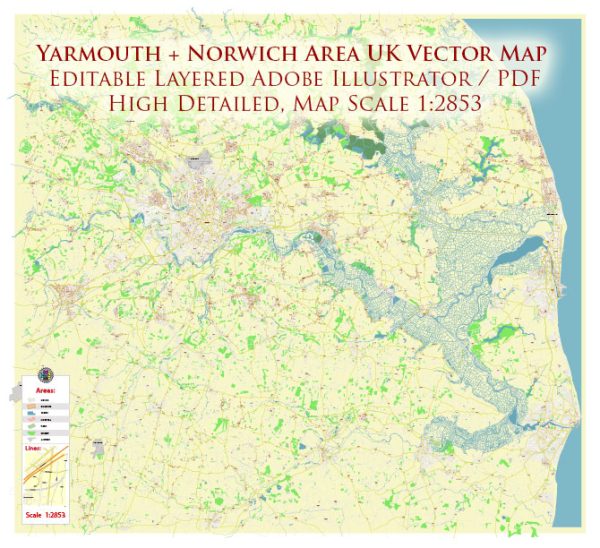The urban development history of the Yarmouth and Norwich area in the United Kingdom is rich and diverse, shaped by centuries of economic, social, and cultural changes. Here’s a brief overview:
Norwich:
- Medieval Period (11th – 15th centuries): Norwich has a medieval history dating back to the Norman Conquest in 1066. The city became an important center for trade and commerce, known for its textile industry, particularly the production of wool and textiles. The medieval street pattern still influences the city’s layout today.
- Renaissance and Tudor Periods (16th century): Norwich continued to flourish during the Renaissance, and the city’s architecture reflected this prosperity. The Guildhall, completed in 1413, stands as a testament to the wealth and influence of the city during this period.
- Industrial Revolution (18th – 19th centuries): The city’s economy expanded with the rise of industrialization, particularly in the textile and shoemaking industries. The arrival of the railway in the 19th century further boosted economic growth, connecting Norwich to other major cities.
- Victorian and Edwardian Eras (19th – early 20th centuries): The Victorian era saw significant urban development, with the expansion of residential areas and the construction of notable buildings, such as the Royal Arcade and Norwich Castle Museum. The growth of suburbs and the improvement of infrastructure, including roads and sanitation, characterized the Edwardian period.
- World War II and Post-War Reconstruction: Norwich, like many other cities in the UK, suffered damage during World War II. The post-war period witnessed reconstruction efforts, and some areas were redeveloped to accommodate the changing needs of the population.
- Late 20th Century to Present: Urban development in Norwich continued, with a focus on preserving the city’s historic character while adapting to modern needs. The Norwich Lanes area, once an industrial district, underwent regeneration and became a vibrant cultural and commercial hub.
Great Yarmouth:
- Medieval and Renaissance Periods: Great Yarmouth has a maritime history dating back to the medieval period. The town’s economy was centered around fishing and trade. The Rows, a network of narrow alleys, developed during this time and remain a distinctive feature.
- Boom in the 18th Century: The 18th century saw Great Yarmouth experience economic growth, driven by the herring industry and trade. The town expanded with new streets and buildings, reflecting its prosperity.
- Victorian Era: The railway arrived in the mid-19th century, connecting Great Yarmouth to Norwich and other parts of the country. The seafront became a popular resort destination during the Victorian era, leading to the construction of piers and seaside attractions.
- 20th Century: Great Yarmouth faced challenges during the 20th century, including economic shifts and changes in the fishing industry. Efforts were made to diversify the economy and promote tourism.
- Post-War Period: Similar to Norwich, Great Yarmouth experienced post-war reconstruction and changes in urban planning. Redevelopment projects aimed to enhance the town’s infrastructure and amenities.
Both Norwich and Great Yarmouth continue to evolve, balancing the preservation of their historic heritage with the need for modern amenities and sustainable development. Urban planning efforts often consider the unique historical and cultural aspects of each area.


 Author: Kirill Shrayber, Ph.D.
Author: Kirill Shrayber, Ph.D.